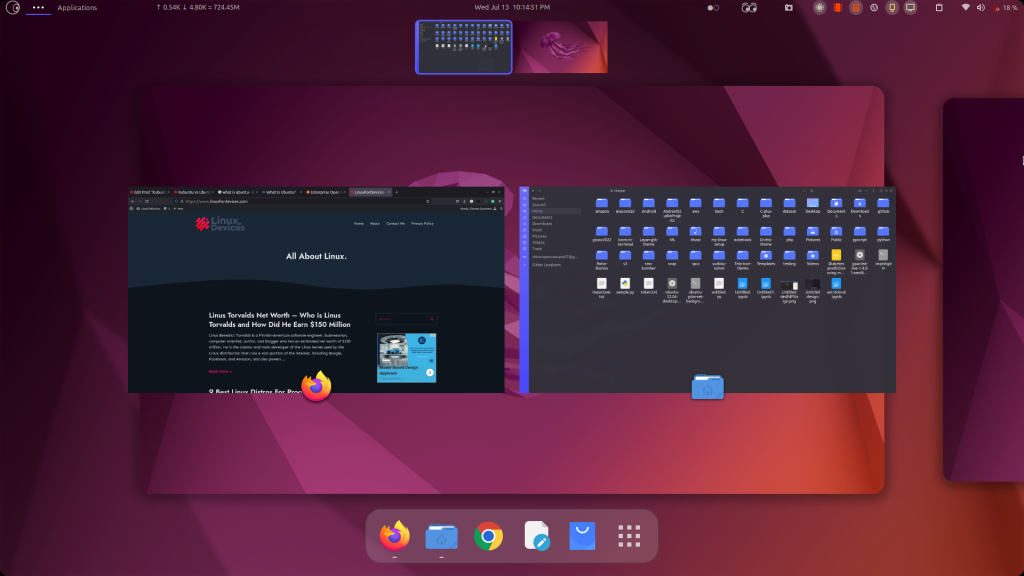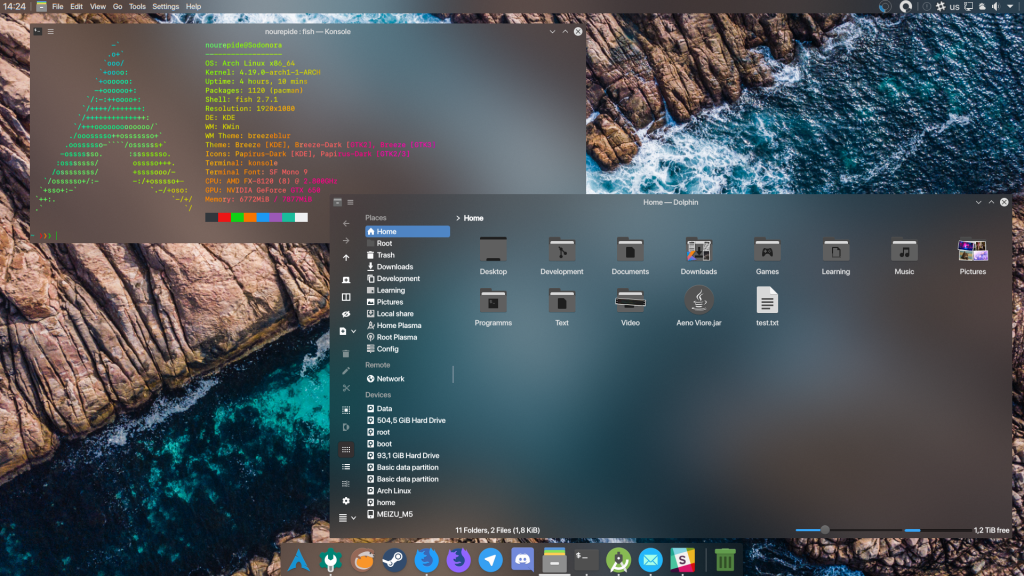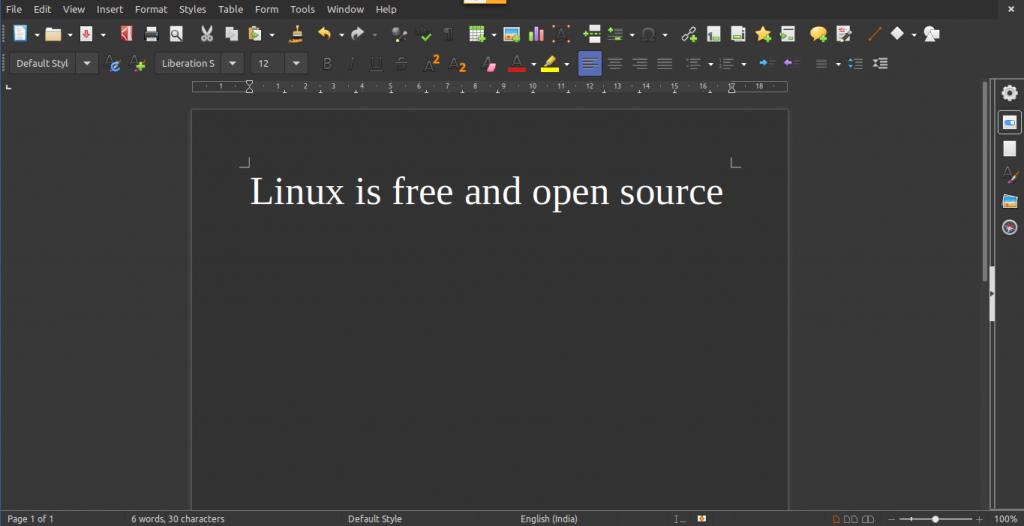Distro-hopping term refers to the practice of regularly switching the installed Linux-based operating system on your PC/Laptop most of the time to find out the best Linux distribution for the user.
Distro, short for distribution, is a common term used to describe all the Linux-based operating system, and hopping refers to… well switching through different OSes. It used to provide many benefits in the earlier years of Linux, or even a few years ago, when there was a lot of development going on in the Linux desktop field, specially in the desktop environment.
But now, the front-end of the Linux desktop has been saturated. You can install any Desktop Environment on Any Linux distribution and have more or less a similar experience. So does distro-hopping still makes sense in 2023? Let’s try to analyze.
Distro-hopping is the practice of switching between Linux-based operating systems. It once offered users a chance to explore diverse Linux distributions and their benefits. However, in 2023, with Linux front-end saturation and availability of online tools to pick the best distribution, it’s less common yet still viable for certain users.
Decoding the Reasons: Why Did Users Distro-hop?
There could be a number of why people distro-hop, some of them are mentioned below:
- A new change in the updates of a distribution which user does not like.
- Wanting to try out different Desktop environments.
- Unavailability of any program which the user wants to try out.
- If any Distribution in use has not been updated for a long while and is beginning to be considered deprecated by everyone in the community.
- A new driver release for user’s hardware which will not be available in the installed distribution for a long while (if it is Point release distribution).
- Gaming optimizations are sometimes kernel based and newer kernels cannot be installed easily on point release distributions.
- User wanting more stability rather than the fresh updates of all the packages.
- Purely by fascination of different Linux distributions, their custom themes and optimizations.
- The user could also be wanting to try out different distributions for the sake of checking the battery life of their device on different distributions.
- Distro-hopping can also be co-related to learning, as you learn about different package managers and distributions during the process.
- The user can also change their distribution due to philosophical reasons, as many people do not like using the
systemdservice and even any proprietary code in their operating system. And many Linux distributions have proprietary code in them (shipped by the hardware vendors) in order to achieve that perfect out-of-the-box experience.
Is Distro-hopping Still Relevant in 2023?
In most use cases? No, distro-hopping does not make sense. There are many online tools and videos which you can use to determine the best Linux distribution (and Desktop Environment) for you. If you are into something which requires you to use the latest software (such as gaming), then go with rolling release distributions such as Fedora or openSUSE Tumbleweed. If you prefer more stability, then go with Linux Mint or any Ubuntu based distribution.

If you want to rarely update your distribution (such as for Grandmas PC who only want to browse the web) then go with distributions which has an LTS (Long term Support) release. All while keeping in mind that the software programs you want to use are available for that Linux distribution. Every application can be installed on every Linux distribution thanks to Flatpak. You might just check whether the application you want to use has a Flatpak release.
Every desktop environment (essentially, your desktop interface) can be easily installed on any Linux distributions as well. So, if you want to try out a new Linux distribution, you can just install it parallelly to your own desktop environment and give it a try.

If your device is new in the market, chances are high that your device is either not supported by any Linux distribution, or, the drivers are only available for the rolling release distributions which contains the newer packages and kernels. So you can go with Arch Linux, Endeavor OS or any Arch Linux based distribution.
Thanks to Steam and Proton, gaming has been easier than ever on Linux. You can use any fairly new distribution, and you are good to go. Steam and Proton releases are not part of the OS release cycle, you can install the New versions of Proton on a fairly new distribution, and you can play new AAA titles on your PC. Just avoid any LTS operating system or Debian if you want to play newer games.
Most of the reasons why people distro-hop can be resolved through a bit of research before choosing any Linux distribution in the first place. But, some reasons still justify Distro-hopping and cannot be avoided if you fall into that category.
Distro-hopping: Reasons You Might Still Want to Try it
If your philosophical views about open-source software does not align with the direction a distribution is going in (such as introducing proprietary code for better compatibility, or Introducing Snaps), then by all means you can change your Linux installations.
If there is no way, you can install the software you want to use on your Installed Linux distribution either through the package manager or via Flatpaks, then I encourage you to change your Linux distribution. But, keep in mind that not all the Windows application is supported by any Linux distribution, MS Office for example, does not work at all, Instead we have open-source alternatives for Office suite.

If you are a laptop owner who wants to preserve your battery life, then I encourage you to try out a few Linux distributions and desktop environment, before settling on an OS. Different distributions implement different optimizations for different hardware products, and your mileage may vary a lot depending upon your OS choice. GNOME might be a better desktop environment for Laptop users because of its smooth gesture implementation.
And, if you just want to learn about how different distributions work, and how their package managers work, then you can also distro-hop if you want. Although, there are software programs like Virtual Machines which you can use inside your OS to install any OS to give that OS a try without affecting your primary desktop.
Reevaluating Your Needs: Is Distro-hopping for You?
Most of the questions related to OS of choice can be answered by this question. What do you want to do on your PC? If it’s gaming, then go with new rolling-release OS, go with Fedora or Arch Linux (not for beginners). If you just want to browse the web or do some office work, then you might prefer stability, go with Linux Mint. Default Desktop Environments of any OS does not matter much because you can replace them easily if you do not like.
If you are someone who loves to tinker and try out new things, well then distro-hopping might give you that adrenaline rush, breaking things and fixing them again surely gives a lot of learning opportunity. Keep in mind that regularly formatting your SSDs degrade it faster, better use virtualization technology.
